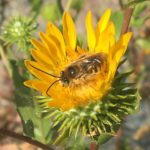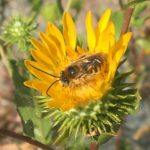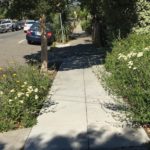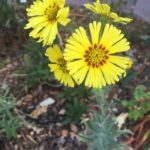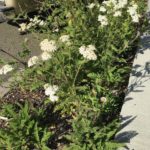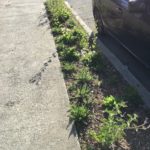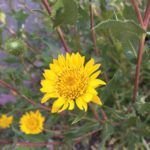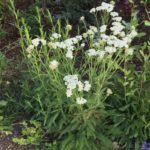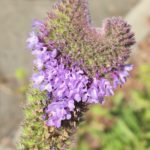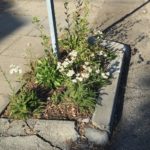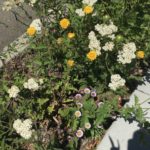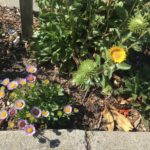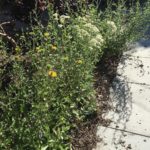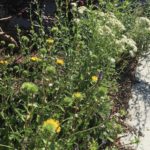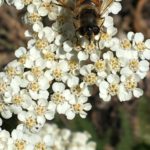Lot size: Patches in 15 front gardens on one block that range in size from 4 to 260 sq. ft. The patches are 100% native.
Garden Age: The patches were installed in 2020.
Years on the Bringing Back the Natives Garden Tour: New this year!
Showcase Feature
In honor of her late wife, Victoria, Angela Fitzsimons asked Naomi Vinbury to create “Victoria Gardens” a block-long pollinator corridor for monarch and swallowtail butterflies. In the Jepson Herbarium Naomi researched what plants naturally grew in this part of Oakland, and referred to Xerces Society materials to developed a list of a dozen plants to reintroduce to the neighborhood. Nearly 700 plants were grown out specifically for this urban restoration project, many from seeds and cuttings taken from genetically local native plants.
Together, Angela and Naomi knocked on neighbors’ doors, requesting permission to plant any part of the neighbors’ front garden. Fifteen homeowners offered to participate in the project, yielding 2’ x 2’ patches around a utility pole in one case, entire parking strips in several others, or specific sections of their front gardens.
These tiny sanctuaries offer butterflies, moths, native bees, and other insects plants on which they can sip nectar, gather pollen, and reproduce—many butterflies and moths can only breed on specific native plants; the monarch butterfly, for instance, will only lay eggs on milkweed.
Come learn about great butterfly plants, where you can get them, and what butterflies are native to the Bay Area! Knowledgeable volunteers will be on hand throughout the day to answer your questions.
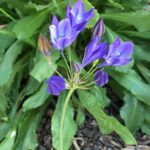 Other Garden Attractions
Other Garden Attractions
• As numerous butterfly and moth species, along with many other small creatures, overwinter in the leaf litter, fallen leaves are left as mulch. This natural (and free!) groundcover also smothers weeds, creates healthy soil, and retains water.
• Dried seed heads are left on the plants for birds to nibble at, and native bees to sleep under. (Really!)
• No pesticides are used in this—or any—Tour garden.
• Stop by Ashley and Matt Spinelli’s garden; their back and front gardens are both on the Tour.
• Landscape designer Naomi Vinbury will be at Spinelli garden throughout the day to answer your questions. Look for her in the pink hat.
Gardening for Wildlife
It’s all about the butterflies! A host plant is one that a butterfly or moth can lay eggs on. Monarch butterflies, for example, can only lay their eggs on milkweed; inclusion of our own local native narrow leaf milkweed, Asclepias fascicularis, in your own garden (along with eliminating pesticide use) could be the monarch’s salvation.
Yampah, or Perideridia kelloggii, is our own local native host plant for the swallowtail butterfly. See the “Find a Nursery” section of this website to locate a native plant nursery near you, and plant some patches of these plants in sunny areas of your garden today!
Included in the butterfly corridor specifically so that butterflies can sip nectar from them are the cheerful yellow flowering gumplant, cream-colored flowers of the hardy evergreen yarrow, and the cheerful lavender and violet blossoms of the Pacific aster and seaside daisy. See the plant list for more ideas!
Music in the Garden
11:00-2:00 Tim and Mairead will play guitar and violin and singing 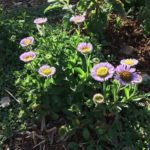 pop and a few Irish folk songs
pop and a few Irish folk songs
Keystone Species in these Gardens (watch this talk by Doug Tallamy!)
At least partially wheelchair accessible? Yes

